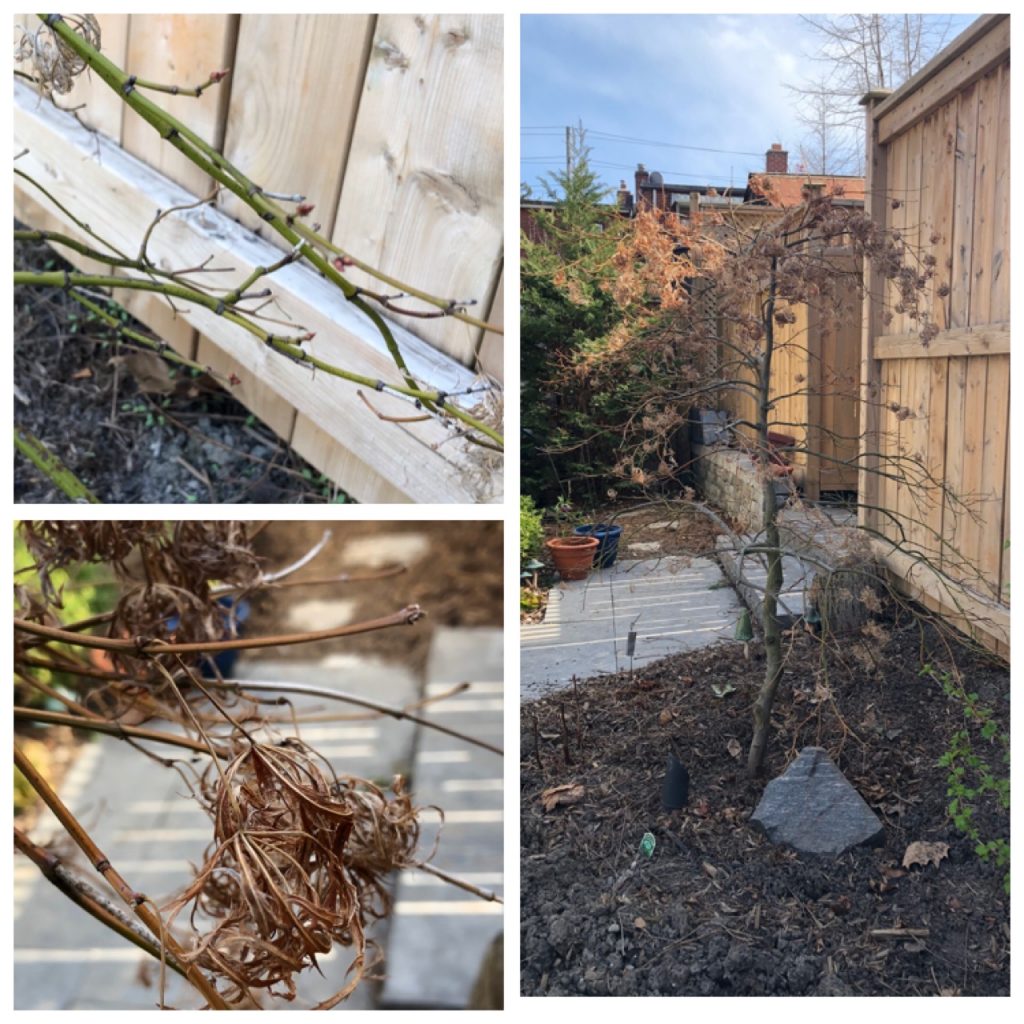
Hello! Question about my Japanese maple, which I’m concerned did not come through the winter very well. You can see in the attached photo (apologies for the focus – iphone is hard to get it right up close) that some branches are nice and green, with red buds starting to swell. That’s on about 30% of the tree, mainly on the side by the fence. Much of the tree looks more like the brown ones, with no apparent spring progress on buds. I had been hoping it was just slow to get going (it is still early), but by now my hope is fading…. Some details:
1. Planted summer 2018, covered with burlap that winter. Looked great last summer. No burlap this past winter.
2. Well-mulched with shredded cedar bark.
3. Soil is clayey-silt, located in the Mimico (Lakeshore/Mimico Ave) area. Slowly amending each year with compost.
4. Photo is looking to the south, so located in partial sun/shade. Yard is dominated by a mature black walnut which provides significant shade through most of the summer.
5. Regularly watered last year, about 1x per week (poss. too much, given clayey soil?) with irrigation system.
If there is any other information you need which may be helpful, feel free to reach out and let me know.
Thank you!
Dan
Thank you for contacting the Toronto Master Gardeners.
Japanese Maples are marginally hardy here in the Toronto area, especially in exposed locations. The most important thing is to select a sheltered planting site that is out of the severest northwest winter winds. They grow well in any well-drained soil, like full sun to partial shade, and will do best with protection from the hot mid-day sun.
In order to avoid winter damage, ensure the tree is well wrapped with burlap over the winter months for at least the first three years in the garden. Continuous watering until freeze-up will help to guard against water loss in winter. An extra heavy layer of mulch will also help to protect the root system from any freeze/thaw cycles during the coldest months.
Once established, Japanese maples may be lightly fertilized only in the early spring (April) with 4-12-8 fertilizer or 15-30-15 water soluble mixture. Major structural trimming may be done during the winter or before the new leaves unfurl in spring. Lighter pruning can be accomplished any time in June after the first major flush of growth begins or in the early fall.
Often times, branches which at first appear dead will eventually put forth new growth. In order to find the extent of the damage, use your fingernail to gently scrape the bark on the branches and trunk, starting at the tips and working back toward the base of the tree, until you see green, healthy wood below the bark.
In order to give the tree the best opportunity to thrive, remove any dead or damaged branches, weeds or other plant material in the area under the tree. Take care of your tree by providing an organic well-composted mulch to at least the depth of 10 cm or 4 inches and as far out as the canopy but not closer to the trunk than 10cm or 4 inches. The mulch will slow down evaporation and provide a cooler root run in the heat of the summer while moderating the temperature in the winter. Water when the soil is becoming dry, do not overwater. For more information please read this Master Gardener Factsheet:
Lastly, we receive numerous questions concerning Japanese maple die-back. This link gives you a list of our archived posts.

